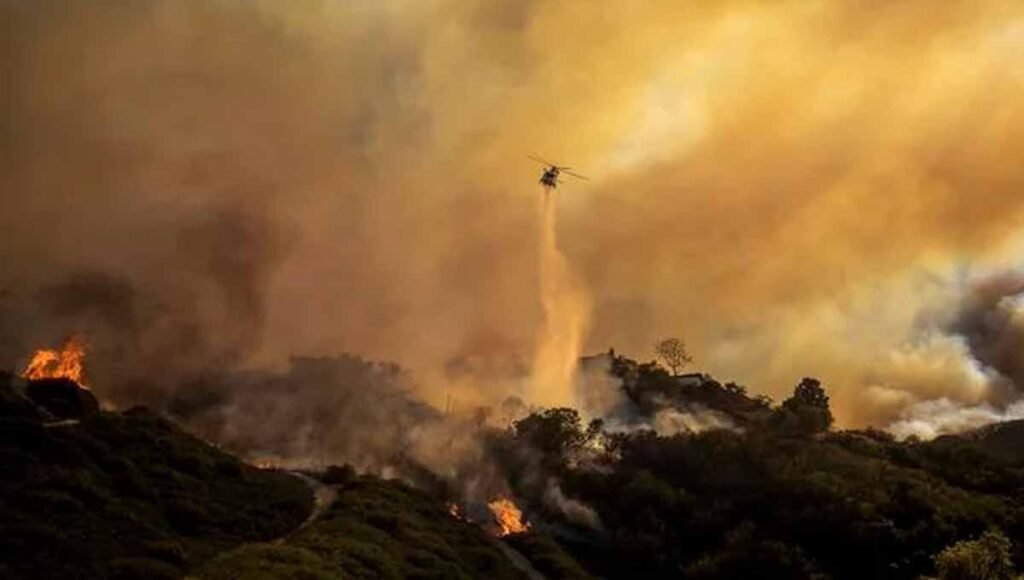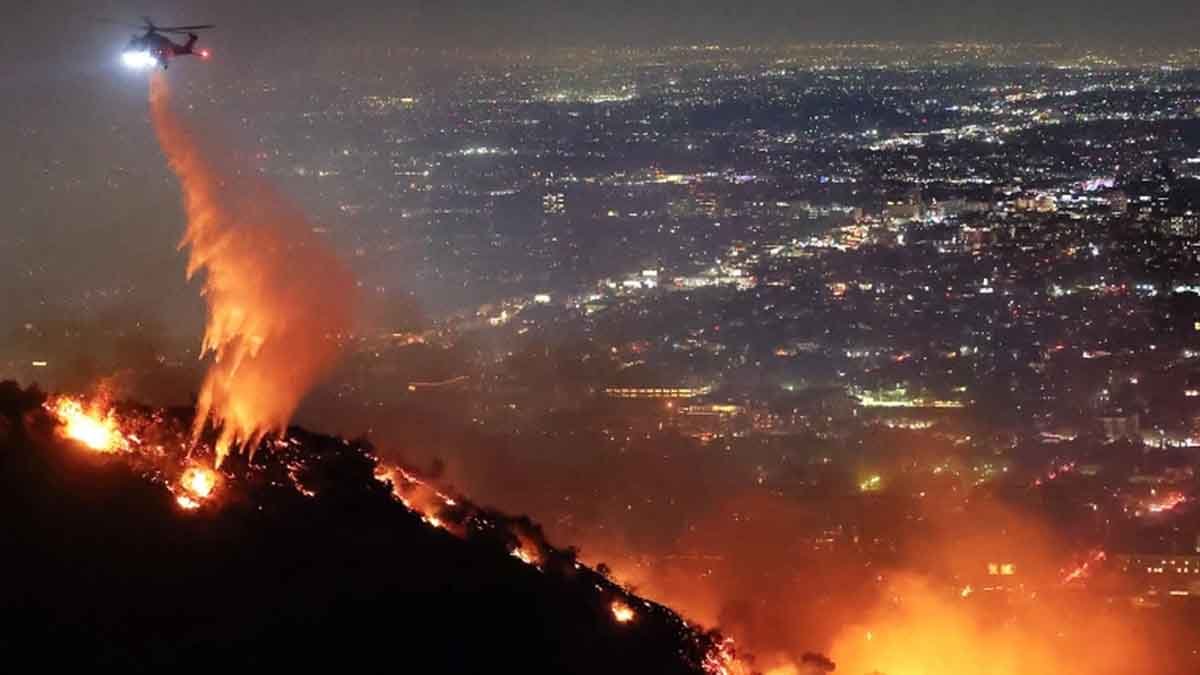Los Angeles fires are still spreading, two fire specialists revealed uncomfortable facts about the fires raging in Los Angeles.
Jack Cohen, a wildfire expert from Missoula, Mont., came to Pacific Palisades not nearly six years ago to teach firemen and property owners how to keep their homes safe from wildfires.
Cohen felt optimistic after three days of instruction, which included a tour of the community, but this optimism waned when it became apparent that his lessons would not be effectively applied. He is very saddened by the incident that occurred this week.
Fire historian Stephen Pyne observes history being made in the wake of this week’s devastation in Los Angeles from his home outside of Phoenix.
“It might be the fire equivalent of a Category 5 hurricane,” Arizona State University professor emeritus Pyne warned.
The siege could be the most expensive wildfire disaster in American history, according to UCLA climate scientist Daniel Swain, with 11 people killed, over 12,000 buildings damaged or destroyed, and 150,000 residents under evacuation orders.
Despite being respected by fire departments nationwide, Cohen and Pyne have discovered that their direct warnings are frequently ignored or discounted. Both stated that they are driven by the conviction that the extent of the devastation that occurred this week in Altadena and Los Angeles is not inevitable, despite their sensitivity to losses and suffering.
Because this problem is so solvable if we decide to pursue it, Cohen stated, “I am compelled to continue pursuing this issue.”
The two experts were interviewed by The Times this week as the disaster was developing and in 2017 when wildfires devastated Northern California. They have long maintained that in order to prevent conflagrations, we must alter our perception of and attitude toward fire.
Cohen examines fire from a scientific standpoint, whereas Pyne concentrates on our cultural relationship with fire. Both start by reframing the issue and imply that we have more control over fire tragedies than we realize.

Don’t think about the “wildland-urban interface.”
Experts frequently point the finger at the so-called wildland-urban interface—the area around towns and suburbs where a lot of vegetation on rough terrain is prone to burning—when devastating fires break out.
However, Cohen noted that urban fires are more common than wildland fires in the current fire tragedies. Changing this perception might result in preventative measures that work better.
He stated that “the wildfire actually only initiates community ignitions largely with lofted burning embers, despite the constant assumption that it’s the big flames” that cause extensive community harm.
Wind-driven embers that ignite spot fires two to three miles ahead of the established fire are responsible for the extensive destruction, according to experts. Altadena’s Eaton fire maps reveal seemingly sporadic ignitions.
“Observe what didn’t burn when you study the devastation in Altadena and the Pacific Palisades: unconsumed tree canopies next to completely destroyed homes,” he remarked. Although it is frequently believed that the devastation process takes place in a coordinated spreading flame front, a tsunami of extremely hot gasses, this is not the case.
Dispersed burning houses in high-density neighborhoods spread to other residences, and so forth. Burning ember showers from burning buildings are usually the cause of ignitions across roadways and downwind.
A misunderstanding about prevention has also resulted from this basic misconception. By using “home-hardening” techniques, such as appropriate landscaping, and fire-resistant siding, and encouraging neighbors to participate in group projects like brush clearance, it is no longer just about preventing wildfires but also about limiting points of ignition within communities.
According to Cohen, “if we believe it to be a wildfire, we tend to maintain wildfire as the principal problem — with wildfire control as the solution.” “However, when community disasters occur, there is no evidence to suggest wildfire control is a reliable approach during extreme wildfire conditions.”
Recall Chicago.
Following the Great Chicago Fire of 1871, which destroyed 17,000 buildings and left over 100,000 people homeless, local governments and city planners started to concentrate on fire prevention engineering as a means of ensuring city safety.
Cohen stated that the goal was not to apprehend the arsonist or the fabled cow that knocked over the lamp in Chicago. “Experts started thinking about how our buildings contributed to the issue.”
Consequently, “cities started to harden themselves against these terrible conflagrations and were successful,” according to Pyne. Following the 1906 earthquake, San Francisco saw what was arguably the last significant urban fire in the United States.
However, as the city expanded, those defenses faltered. Infrastructure was designed without consideration for potential hazards, and building rules neglected to address the needs of particular regions.
Many of the most catastrophic fires in the past 30 years have been urban fires, according to Pyne, who has authored over 30 volumes on the cultural and social impacts of wildland and rural fires worldwide.
Urban fires were thought to be extinct, yet they have returned. He compared it to witnessing the resurgence of polio. “This keeps happening.”
The 1991 Tunnel fire in the Oakland and Berkeley Hills signaled the beginning of the modern era of urban fires, destroying 2,843 homes, although the Bel-Air fire in 1961, which destroyed 484 homes, and the Mandeville Canyon fire in 1978, which destroyed 230 homes, are frequently cited for the extent of their destruction.
More recently, fires destroyed Lahaina, Hawaii, two years ago, the communities of Superior and Louisville in Colorado in 2021, and Gatlinburg, Tennessee, in 2016.
Pyne stated, “It’s not just a California quirk.” “This is a national issue, but I believe California gets there first in exaggerated ways. In actuality, it is turning into a global problem.
Consider more than just the conventional wisdom.
The main causes of today’s flames, dryness and Santa Ana winds, have long affected southern California. Furthermore, Pyne contends that a culture reliant on fossil fuels also contributes significantly, even as climate change is making them more frequent and severe.
According to him, “a fossil-fuel society also remakes landscapes by influencing how people plan agriculture, urban development, and the positioning of roads and power lines.”
According to Pyne, the general consensus is that “fire is something that happens once in a while.” It’s a season. We don’t actually need to make systematic investments in it. We simply need to be ready for the emergency and then react to it.
“I believe we’ve moved past that,” he stated.
According to Pyne, most people are aware of a fire, but not many consider it to be a year-round occurrence. “We must rearrange our lives to accommodate this reality,” he stated. “Remembering that this is the world of today and that these outbursts are only a part of something much larger is more important than simply owning a go-bag.”
According to Cohen, it’s critical to reframe the topic of climate change because it will ultimately make us less susceptible to these calamities and offer us greater control over our fire environment.
“We can address our community’s wildfire risk issue without addressing climate change,” he stated.
Be practical.
According to Cohen, the most unsettling reality of the past four days has been how rapidly the severe fire conditions outmatched and overwhelmed firefighting efforts. Anthony Marrone, the fire chief for L.A. County, admitted that there was just not enough personnel to handle this disaster.
However, Cohen stated that staffing is not the only issue.
He claimed that despite their inability to protect us under the severe wildfire circumstances, “we have fire departments that are constantly telling us that they’re going to protect us.” Now is the moment to acknowledge the truth and begin to inquire as to why we are unable to stop this catastrophe.
Cohen refers to it as a sense of entitlement that we shall be safe, which fire safety organizations perpetuate even when it isn’t true.
When fighting a fire the size of the Palisades or Eaton fires, it is impossible to meet the minimum requirements of three engines or fifteen firefighters for a single-residence fire set by the National Fire Prevention Association, a nationwide nonprofit that sets standards for fire suppression operations.
Cohen remarked, “We’re not identifying, evaluating, or asking how we’re failing.” “We simply believe that we need more helicopters and airplanes operating around the clock.”
More Firehawk helicopters or CL-415 super-scoopers won’t assist when water is being dropped into wind gusts of up to 60 mph.
Pyne stated, “We don’t necessarily need a fire czar and a trillion-dollar program to get control of the fire problem.” “To stop these eruptions, we need a thousand things that alter the environment in ways that are beneficial.”
For instance, property owners must receive ongoing and advance warnings from municipal and fire protection organizations to remove dead vegetation and wet dry brush within 10 feet of the house with long, frequent sprinklings.
Pyne remarked, “Fire has always been our best friend and companion.” And now that relationship has turned into our deadliest adversary since we don’t care about it.

